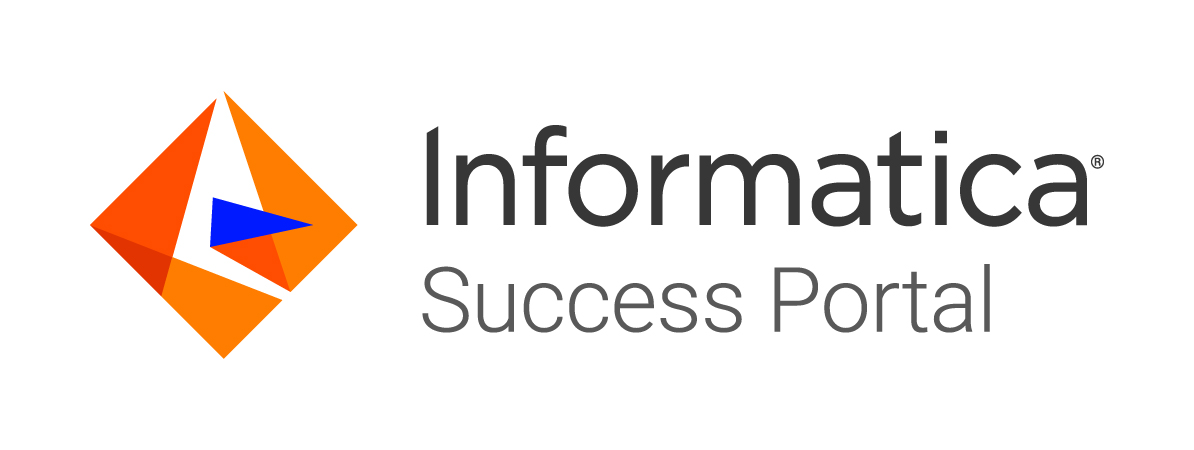-
Manage your Success Plans and Engagements, gain key insights into your implementation journey, and collaborate with your CSMsSuccessAccelerate your Purchase to Value engaging with Informatica Architects for Customer SuccessAll your Engagements at one place
-
A collaborative platform to connect and grow with like-minded Informaticans across the globeCommunitiesConnect and collaborate with Informatica experts and championsHave a question? Start a Discussion and get immediate answers you are looking forCustomer-organized groups that meet online and in-person. Join today to network, share ideas, and get tips on how to get the most out of Informatica
-
Troubleshooting documents, product guides, how to videos, best practices, and moreKnowledge CenterOne-stop self-service portal for solutions, FAQs, Whitepapers, How Tos, Videos, and moreVideo channel for step-by-step instructions to use our products, best practices, troubleshooting tips, and much moreInformation library of the latest product documentsBest practices and use cases from the Implementation team
-
Rich resources to help you leverage full capabilities of our productsLearnRole-based training programs for the best ROIGet certified on Informatica products. Free, Foundation, or ProfessionalFree and unlimited modules based on your expertise level and journeySelf-guided, intuitive experience platform for outcome-focused product capabilities and use cases
-
Library of content to help you leverage the best of Informatica productsResourcesMost popular webinars on product architecture, best practices, and moreProduct Availability Matrix statements of Informatica productsMonthly support newsletterInformatica Support Guide and Statements, Quick Start Guides, and Cloud Product Description ScheduleEnd of Life statements of Informatica products
Command Task and Notification Task in Task flow
Share On:
Overview
Command Task:
- You can use a Command Task step to run shell scripts or batch commands from multiple script files on the Secure Agent machine.
- For example, you can use a command task to move a file, copy a file, zip or unzip a file, or run clean scripts or SQL scripts as part of a task flow. You can use the Command Task outputs to orchestrate subsequent tasks in the task flow.
Notification Task:
- A Notification Task step sends a notification to specified recipients.
- You can configure the Notification Task step to send an email notification. For example, you can send an email notification informing recipients about the number of success rows and error rows encountered in a Data Task step of a task flow.
- You can define properties for the Notification Task step to configure the email recipients and email content. You cannot use distribution lists in the Email To, Email Cc, and Email Bcc fields.
Pre-Requisites
- Basic Knowledge of Task flow.
- Common Integration service should be enabled to run command tasks.
Self-Service Resources
Goals
- Understand the command task overview and configuration.
- Understand the notification task overview and configuration.
Outcome
- Understand the command task overview and its uses.
- Understand the notification task overview and its uses.
- Understand Advanced parametrization.
- Developers
Actions
Add to Favorites
Remove from Favorites
Engagement Details
Catalog Type
Ask An Expert
Engagement Category
Feature Clarity
Products
Cloud Data Integration
Engagement Type
Ask An Expert
Adoption Stage
Implement
Focus Area
Adoption - Technical
Functional
Engagement ID
AAE-CDI-010
Disclaimer
- All the topics covered in the Success Accelerators/Ask An Expert sessions are intended for guidance and advisory only. This is implicit and it will not be called out under the scope of each engagement.
- Customers need to include their relevant technical/business team members highlighted in each engagement topic to derive the best out of each engagement.
- Customers need to perform any hands-on work by themselves leveraging the guidance from these engagements.
- Customers need to work with Informatica Global Customer Support for any product bugs/issues and troubleshooting.
